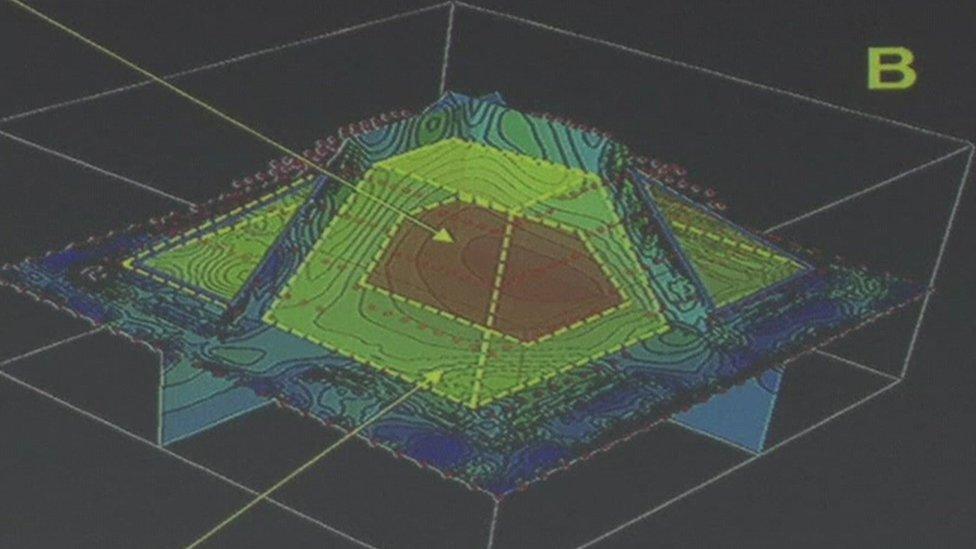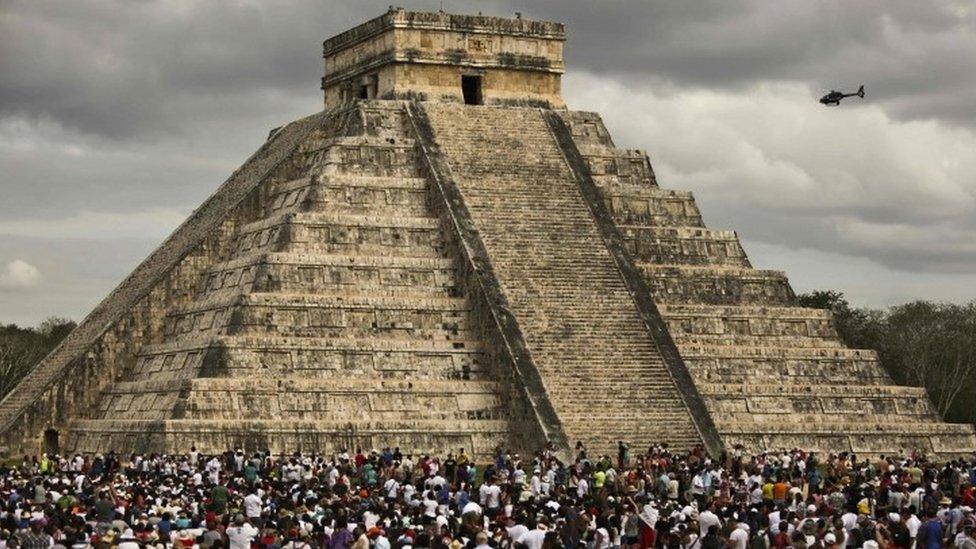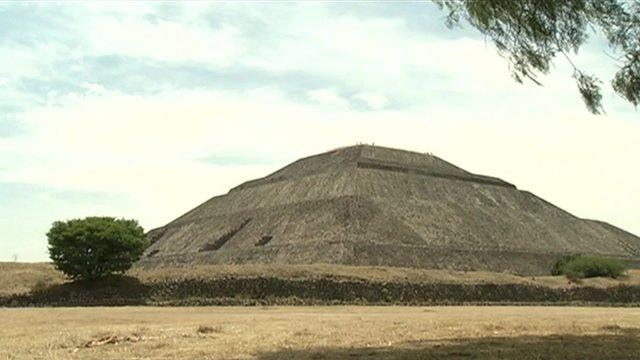Mayan 'nesting doll pyramid' discovered in Mexico
- Published

Researchers used 3D imaging to illustrate their find
A third structure has been found within the famous Kukulkan pyramid in eastern Mexico, experts say.
The 10m (33ft) tall pyramid was found within two other structures that comprise the 30m pyramid at the Mayan archaeological complex known as Chichen Itza in Yucatan state.
The discovery suggests that the pyramid was built in three phases.
The Mayan civilisation occupied Central America and had its peak around the 6th Century AD.
The recently-discovered smallest pyramid was constructed between the years 550-800, researchers say.
The middle structure was discovered in the 1930s and is estimated to date back to the years 800-1000, while the largest one is believed to have been finished between 1050-1300.
"It's like a Russian nesting doll. Under the large one we get another and another," researcher Rene Chavez Seguro told a news conference.

The Kukulkan pyramid dominates a major Mayan archaeological site

The 10m (33ft) tall pyramid was found within two other structures that comprise the pyramid
Pyramids were built within each other for various reasons, including deterioration of the structure or the arrival of new leadership, experts say.
They say the smallest pyramid was discovered using 3D Electrical Tomography, a non-invasive technique that measures the electrical signal caused by small injected currents to form a representation of the pyramid's interior without causing damage.
The discovery could provide new insights into the original Mayan culture before it intermingled with populations from central Mexico.
Last year, archaeologists discovered that the Kukulkan pyramid was built on top of a cenote, or underground river, which are common in the region and revered by the Maya.
Today Chichen Itza is a Unesco World Heritage Site, and receives more than a million visitors a year.

- Published20 December 2012

- Published10 April 2014
